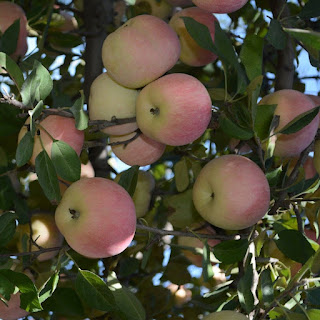Lemon
Lemon a Species of Citrus
Common Name:
- Lemon
- Sweet lime
- Mayer lemon
Botanical Name:
Citrus limon
Name Story:
Lemon:
The word “lemon” is derived from the Anglo-Saxon language and from the word “lymon” from the old French language meaning “citrus”. As the appearance of the fruit is almost identical to a citrus, it is still being called lemon up to this day.
Information:
Lemon is a cultivated small evergreen tree known for its yellow, juicy, sour fruits full of citric acid. Its origins are unknown, but it was probably first created in India, China, or Burma as a hybrid of sour orange (Citrus × aurantium) and citron (Citrus medica). It is commercial fruit cultivated in warm regions around the world.
Scientific classification:
Genus:
Citrus - Citrus
Family:
Rutaceae - Rue, Buchu, Citrus
Order:
Sapindales - Maples, mangos, mahogany, citrus, and allies, Soapberries, cashews, mahoganies, and allies
Class:
Magnoliopsida - Dicotyledons, Dicots, Eudicots
Phylum:
Tracheophyta - Vascular plants, Seed plants, Ferns, Tracheophytes.
Interesting Facts:
Those with this birth flower are very charming and popular, but are also the subject of jealousy from those of the same gender, so they have to work harder to win favor from them. It belongs to the citrus family. They blossom in summer, mostly small white or yellow flowers that have a mosquito repellent effect.
Symbolism:
purification, abundance, happiness, love.
Characteristics:
Plant Type: Tree
Lifespan: Perennial
Bloom Time: Spring, Summer
Plant Height: 7 to 20 feet
Spread: 3 to 8 feet
Flower Size: 0.6 to 0.8 inch
Habitat: Woodland garden
Flower Color: White
Leaf Color: Green
Fruit Color: Yellow٫ orange
Stem Color: Green
Conditions Requirement:
Difficulty Rating:
Growing Lemon is easy as long as you can give them what they need. They are sensitive to certain types of pests and diseases.
Sunlight:
Full sun
Hardiness:
30 ℉
Hardiness Zones:
10 to 13
Soil:
Loam, Sand, Clay, Acidic, Neutral
Care Guide:
Water:
Lemon is drought-tolerant, but consistent moisture will ensure the healthiest plant. New plants need a regular watering schedule until they become established. Mature plants prefer to be deeply and thoroughly watered, rather than lightly and frequently. When the top few inches of soil are dry, water the plant. In hot summer, your plant may require more water than usual.
Fertilization:
Fertilization once every half month during the growing season.
Pruning:
Shape the plant every 2 months during the growing season.
Planting Time:
Spring, Fall
Harvest Time:
Fall
Propagation:
Cutting, Grafting, Sowing
Pests and Diseases:
Thrips, spider mites, scale insects, leaf miners, aphids, sooty mold, gummosis, anthracnose.
Tips from Garden Coaches:
Lemon tree blooms with small white flowers and bears bright yellow fruits. It is a good planting choice whether grown in the garden or potted in your home. You only need to provide sufficient sunlight and water for it to flourish.
Uses:
Economic Value:
Spices can be extracted from the leaves, and essential oils from the lemon peels. It is a raw material used in advanced cosmetic products.
Beauty Improvement Value:
Lemons are rich in vitamins, which can effectively promote metabolism and delay aging.
Garden Use:
Though lemon trees are typically grown commercially, they have seen a jump in popularity in home gardens. Their compact size (they can even be grown indoors), attractive leaves, and bright, tasty fruit have made them a staple in warmer-climate regions, particularly in Mediterranean-style gardens. Planting a lime tree nearby will help pollinate your lemon tree, and lemon balm will help deter harmful caterpillars. Roses, geraniums, and jasmine work great when planted under lemon trees.




Comments
Post a Comment